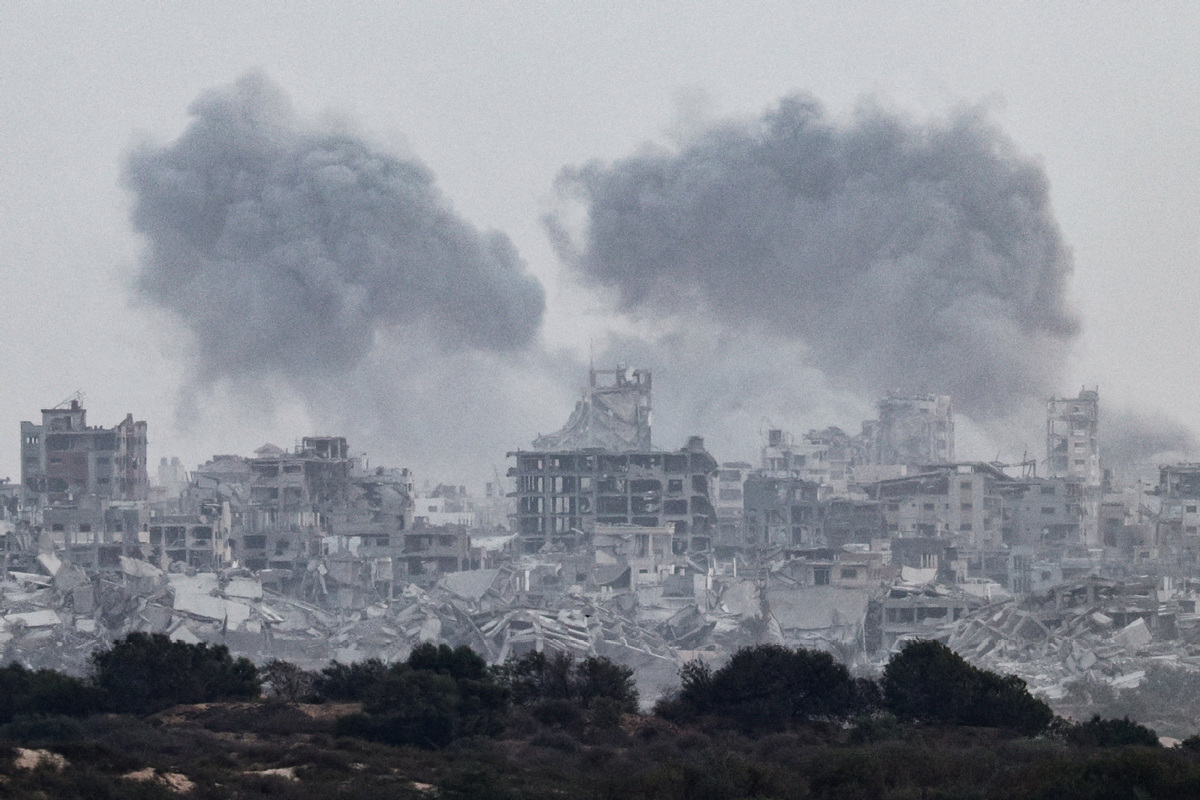Only real pressure, not endless debate, can end war

Two years after Hamas’ Oct 7, 2023, assault and Israel’s well-schemed retaliatory strikes that set Gaza ablaze, the international community is still acting as if negotiations might somehow break the deadlock.
Talks drag on daily. Envoys fly in and fly out. Press releases hint at “progress”. Yet, for families in Gaza, life remains a grim cycle: they are ordered to relocate, allowed to return, then forced to flee under fire yet again.
In January 2025, the Israeli army allowed Palestinians to return to the northern Gaza Strip — Gaza City and North Gaza. By September, these same civilians were ordered south again, funneled toward Al-Mawasi and Deir al-Balah, which were already buckling under months of mass displacement.
READ MORE: Indirect Hamas-Israel talks on Gaza ceasefire plan kick off in Egypt
The Israeli army then followed this order by launching an intense bombardment campaign, striking residential towers across Gaza City that once sheltered thousands of people. It was a clear message to civilians: compliance guarantees nothing.
The economics of escape are obscene. A simple nine-kilometer ride from Gaza City to Al-Nuseirat Refugee Camp in the south can cost as much as $5,000. These prices are set in desperation, auction-style, in a war zone where cash barely circulates.
Y. H., a resident of Gaza City, told me his family was first quoted $2,500, then $4,000, just to move south. They stayed because they could not pay. Others remain because they have no tents, no land, and no genuine “safe zone”.
This is not an accident of war; it’s the predictable outcome of a systematic policy, or lack of policy. Displacement without shelter, orders without corridors, and “safety” without food is not protection — it is coercion.
While the destruction continues, ceasefire talks take place. Yet, we all know where this road will lead. Demanding that one side negotiate while striking its envoys is not diplomacy; it is performance.
Reports of Israeli strikes on Hamas negotiators in Qatar that killed several members make a mockery of the negotiating table. Is Israel bargaining in good faith when it puts those it negotiates with in the crosshairs?
The latest 20-point plan, proposed by United States President Donald Trump and backed by Israel, contains demands that require Hamas to disarm, self-destruct, and cede power completely. Hamas cannot be absolved of responsibility, but it is crucial to recognize that no armed actor dissolves itself because an adversary demands it.
Requiring that as a precondition to a deal is not a pathway to peace, but an excuse for perpetual war. Hamas accepting the terms and conditions of Trump’s offer is not a magic key to peace.
It guarantees neither a durable cease-fire nor the absence of a successor movement, especially while none of the 20 points specify a timeline for Israel’s withdrawal from the occupied territories in Gaza and the West Bank.
History shows that where oppression persists, new coalitions eventually take shape, sometimes rebranded, sometimes splintered, but driven by the same motivation.
Whether the international community recognizes them as legitimate or condemns them as outlawed, such forces tend to rise when the root causes of conflict remain unaddressed.
If the international community is serious about ending this war, it must move beyond mere words of condemnation for Israel’s perpetual bombing to the enforcement of an immediate, independently monitored ceasefire.
This would require neutral observers who publicly report violations, full humanitarian access to fuel and medicine, protected corridors people can actually use, and a halt to land grabs masked as temporary military needs.
Political talks must include Palestinians; exclusion only seeds the next war. Any party that breaks the ceasefire terms should face sanctions.
None of this requires a diplomatic miracle. It requires leverage: attaching conditions to weapons transfers, imposing sanctions on spoilers, and ending the impunity that has defined Israel’s behavior over the past two years.
If outside powers can deliver precision bombs on schedule, they should be able to deliver insulin, fuel, and food just as reliably.
Two years on, Gaza’s civilians are the only consistent losers in every round of diplomacy. They are told where to walk, where to sleep, and when to run, while politicians haggle over optics.
ALSO READ: Two years on, Gaza's agony calls for action
Achieving a permanent ceasefire between Israel and Palestine only requires what has been missing for two years: political will directed at saving lives and the guts to confront the real drivers of this war.
The latest progress on the first phase of a Gaze ceasefire is not because the parties suddenly discovered common ground. It is largely because the international community, especially the United States, is finally running out of excuses for inaction.
The US administration should further join the international community to not only earnestly enforce the first stage of truce in Gaza, but also confront the roots of the conflict on the Israeli side, and engender a permanent solution to the West-produced conflict of decades, and avoid repeated drift into new horror.
The author is director of operations at Euro-Med Human Rights Monitor’s project in Gaza, We Are Not Numbers.
The views do not necessarily reflect those of China Daily.


